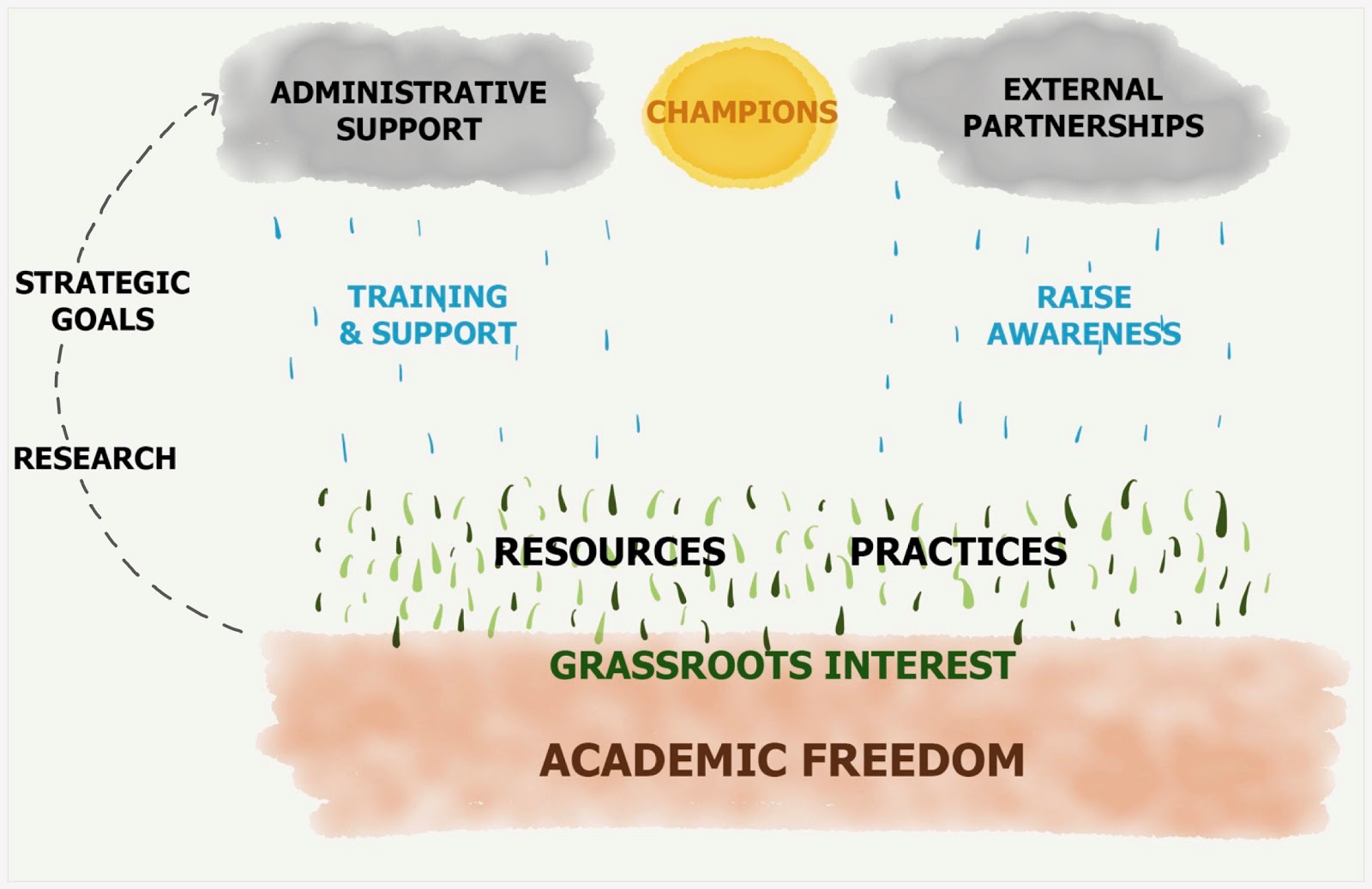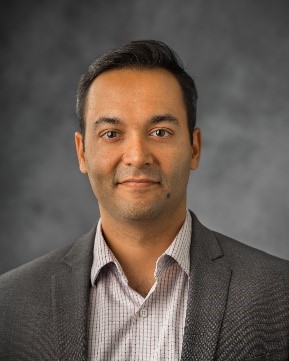A Recipe for a Successful Institutional Open Education Initiative
Published by: WCET | 2/6/2019
Tags: Faculty, Open Educational Resources, Professional Development
Published by: WCET | 2/6/2019
Tags: Faculty, Open Educational Resources, Professional Development
Rajiv never ceases to amaze me; the first time was at Nicole Allen’s (SPARC) annual OERroke party at Open Ed. Rajiv can really sing and dance. Although it is hard to top a duet performance of “I Had the Time of my Life” from Dirty Dancing with Amanda Coolidge (BC Campus), Rajiv has gone on to even greater accomplishments. On Jan. 23, 2019, BCcampus announced Dr. Rajiv Jhangiani was the winner of the Award for Excellence in Open Education. He has worked tirelessly to advance open education and open pedagogy in Canada, the US, and around the world. While I believe Rajiv would’ve been successful at any career he chose, he has dedicated his life to making education accessible, equitable, and inclusive for others. Take a few minutes to read his insightful blog, and then follow Rajiv on Twitter, read his book, and watch his talks on Youtube.
—Tanya Spilovoy, WCET
I believe in the power of open education to help widen equitable access to education. I believe in using open resources, not only for the financial benefits for students, but also for the impact on teaching and learning.
As an early adopter of open textbooks, I have for years witnessed first-hand the tangible impact of the cost savings on my students’ lives. As an open textbook author, editor, and OER project manager, I have heard from numerous faculty who have taken advantage of the open licensing and built upon my efforts. They have updated, augmented, and adapted the resources available to better serve their students. As an open education researcher, I have investigated the perceptions and impact of OER adoption on students, faculty, and institutions. As an open education scholar, I have published articles, chapters, as well as a book on the subject. As an open education advocate, I have had the privilege of working with over 100 institutions across five continents to help build local capacity and guide their efforts to support this important work.
In the course of this work and especially in the context of my role as the institutional lead for open educational practices at Kwantlen Polytechnic University (KPU), there is one question to which I have given a lot of thought in recent years: What enables an open education movement to gain traction within an institution?

But first, let’s provide some context: KPU is the leading institutional adopter of open textbooks and other OER in Canada. We launched the country’s first two Zed Cred programs (known as Z Degrees in the U.S.) over the past two years, established an OER grant program (overseen by a dedicated and cross-functional Open Education Working Group), integrated Zed Cred markings into our course timetables, established a print-on-demand service for open textbooks, provided faculty development opportunities for open pedagogy, and recently launched OPUS, an open publishing suite to support faculty and staff who wish to create or adapt OER. I mention these achievements because my reflections on successful open education initiatives are inevitably guided by the growth of our own initiative efforts at KPU.
In reflecting on my experiences, I realize that, although open education champions are critical (be they faculty, librarians, instructional designers, or students), there are at least eight other necessary ingredients that must be present for their message to gain traction. They are as follows:
 surefire way to ensure burnout. The movement will then likely die an early death. So, just as champions can support their colleagues, the champions (the most irreplaceable of all ingredients) themselves need support, whether in the form of time releases or secondments, role re-designations or the creation of a designated position, or even necessary funding (e.g., for campus events and OER grants). Note that each of these assistances stems from the visible and tangible support of senior administrators.
surefire way to ensure burnout. The movement will then likely die an early death. So, just as champions can support their colleagues, the champions (the most irreplaceable of all ingredients) themselves need support, whether in the form of time releases or secondments, role re-designations or the creation of a designated position, or even necessary funding (e.g., for campus events and OER grants). Note that each of these assistances stems from the visible and tangible support of senior administrators.
While this is not mean to be an exhaustive list, nor a universal formula applicable to all contexts, I have tried to capture the elements I have found to be essential in the context in which I work.
Without doubt, the recipe that has worked for KPU is a function of our identity as an open access institution that is focused on teaching excellence. Regardless of your institutional lens and goals, I can assure you that, once this momentum begins to build, you will see signs that include faculty proudly sharing their innovations, external recognition, and gratitude from students. And if you are lucky, the initiative will reach the point of where it is now at KPU — where open education is an integral part of our institutional DNA and a core part of our identity.
If you are passionate about widening equitable access to higher education, about improving student persistence and performance, and catalyzing pedagogical innovation, I urge you to follow our lead.

Rajiv Jhangiani
Special Advisor to the Provost on Open Education
Kwantlen Polytechnic University

1 reply on “A Recipe for a Successful Institutional Open Education Initiative”
[…] Source: A Recipe for a Successful Institutional Open Education Initiative – WCET Frontiers […]